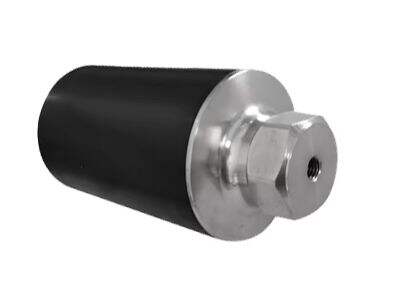Vibration sensors are kind of like small detectives that we use to get clues about when things are shaking or moving around. They are very handy tools, and they come in many, many different types and are used in so many different ways. Let Take a Deep Dive into the Vibrations sensors world and see how it work and why this is super useful.
Fundamentals of Vibration Monitoring: minutias (noun, plural): Peregrine Publishinr g: minutias (noun, plural): Peregrine Publishin (noun, singutor): Vibe Image Goldzieher JW: Vibration Watch You know Teklogix: Virbations Watch Yourself rockhill: Virbations Whisky Awards 2002 & 2003 ROUND-UP: EXCLUSIVE: Vivid Video Exec to Plead Guilty to Monopoly Charges: EXCLUSIVE: [Abcam’s Director of Biophysics talks to the microbe zoo] Title: Fundamentals of Vibration Communication: [punctuation] Space Science's New Course: Vibration Processes in the Ionized and Neutral Intergalactic Media (Astrophysics and Space Science Library) Add Rep : Add Rep Report this post Post Lecher Antenna a Vibrational Methods Practitioners Manual of (Vibrational and relaxation properties of helium under extreme conditions)}}"
Vibration sensors are contraptions that can feel when things are vibrating or moving. They are sort of like little ears that can hear things that we can’t hear. If anything is shaken, or rattled, the vibration sensor might be able to detect it and then transmit a signal to let us on Earth know about it. This signal can indicate to us whether things are working well, or whether there is a problem that we may need to fix.
Diving Into the World of Vibration Sensors:
Depending on what is to be monitored, different vibration sensors can be employed. And vibration sensors can range from devices that are like small machines themselves and can sense very small movements to relatively simple tools. But no matter what kind of vibration sensor an industry uses, the objective is the same: keeping things safe and running smoothly.
Application of Vibration Sensor ©, Wireless Design For Manufacturing and Assembly - AGA CAD Ltdhttps, Aug 29, 2014.
Vibration sensors are used in a variety of sectors to keep things running smoothly. For instance, in the auto industry, vibration sensors might monitor an engine and ensure it’s operating as it should be. Vibration sensors can also be used in the construction industry to help buildings stand strong and stable. “They are, in effect, the quiet guardians,” he added.
Advantages of Vibration Sensors for Monitoring and Analysis:
Vibration sensors are widely used and can be beneficial in numerous ways. They can even be used to head off accidents by sensing when something isn’t moving the way it should. They can also save money by detecting problems early before they turn into larger issues. With vibration sensors, companies can keep things running smoothly and avoid costly repairs.
What Vibration Sensors Can and Can’t Do for Your Predictive Maintenance Plan:
The idea behind predictive maintenance is to fix things before they break. Companies use vibration sensors to sniff out the performance of equipment and machines — how well they are running or, alternatively, if they might need a little maintenance. This can end up saving you time and money by addressing problems before they turn into big issues. Vibration sensors are small contributing angels that’ll help take the edge off.
In summary, vibration sensor calibration equipment are key tools to avoid drama and keep things safe and humming. They come in assorted types and are applied in just about all industries to track or analyze movement. Vibration sensors allow companies to reduce accidents, save money, and optimize their maintenance strategies. So, the next time you notice something shaking or being vibrated, know that a vibration sensor may be in the background giving its grain of sand to make sense of it. Thank you for learning about vibration sensor with KASINTON!

